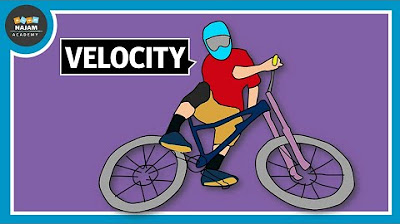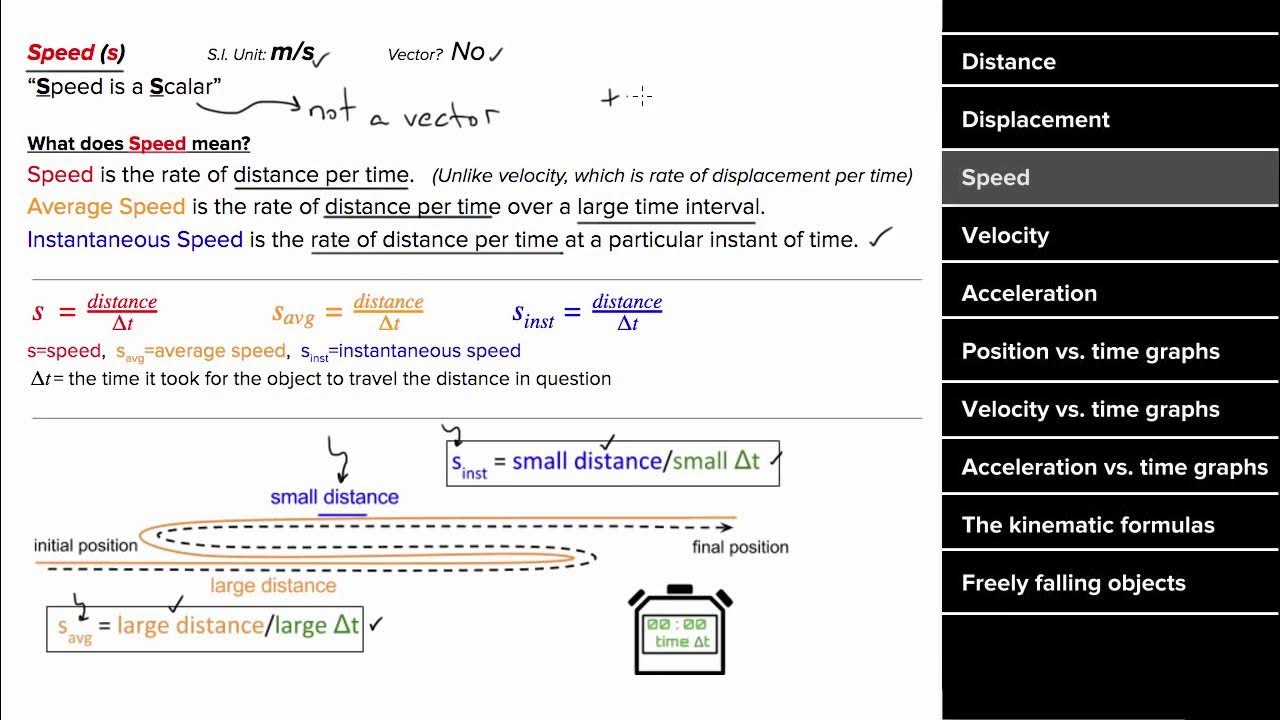Gridiron physics: Scalars and vectors - Michelle Buchanan
TLDRThe video script narrates an exhilarating football play, highlighting the scientific principles at work. It begins with the quarterback receiving the ball five yards deep, a scalar quantity, and the ensuing play unfolds as a series of vector quantities, illustrating direction and magnitude. The quarterback's three-step drop and subsequent forward movement, totaling a six-yard distance with zero displacement, exemplifies the difference between distance and displacement. The receiver's acceleration, gaining speed and distance over five seconds to cover fifty yards, is contrasted with the linebacker's slower pace, showcasing the concepts of speed and velocity. The receiver's acceleration, the change in speed over time, ultimately allows him to outpace the defender and secure a touchdown, a triumph of both athletic prowess and the underlying physics.
Takeaways
- 🏈 The importance of a strategic play in football to maintain a competitive edge as time runs out.
- 🏟️ The offensive formation with three receivers to the right and two to the left is ideal for the desired match-up.
- 🔍 Defense strategy is to man up with no safety, which presents a favorable offensive opportunity.
- 📐 The distinction between scalars (quantities with only magnitude) and vectors (quantities with both magnitude and direction) is crucial in understanding the game's dynamics.
- 🏃♂️ The quarterback's movement, including dropping back and stepping up, involves both distance (a scalar) and displacement (a vector).
- 🚀 The concept of speed (scalar) and velocity (vector) is vital in analyzing the receiver's and linebacker's performance.
- ⏱️ Acceleration, the change in speed over time, is a vector quantity that affects the outcome of the play.
- 🤸♂️ The receiver's ability to accelerate and gain speed allows them to outpace the linebacker, demonstrating the role of acceleration in the game.
- 🎯 The quarterback's accurate throw, influenced by his awareness of the rush and the receiver's positioning, results in a successful play.
- ⏰ The timing of the play, with the touchdown scored as time expires, highlights the significance of precise execution under pressure.
- 🧠 The interplay of physics concepts like scalars, vectors, distance, displacement, speed, velocity, and acceleration in the context of a football game.
Q & A
What is the significance of the play described in the transcript?
-The play is significant because it results in a touchdown, which ultimately leads to the team's victory in the game.
How does the quarterback's position in the 'gun' formation relate to scalar and vector quantities?
-The quarterback's position is five yards deep in the 'gun', which is a scalar quantity. When direction is added, such as 'five yards deep', it becomes a vector quantity.
What is the difference between distance and displacement as described in the script?
-Distance is a scalar quantity that measures how far an object has moved without identifying the starting or ending point. Displacement, on the other hand, is a vector quantity that describes the change in position of an object, taking into account both magnitude and direction.
How does the quarterback's movement during the play illustrate the concept of displacement?
-The quarterback drops back three yards and then moves forward three yards, ending up in the same place where he started. This means his displacement is zero yards, despite the total distance covered being six yards.
What is the difference between speed and velocity?
-Speed is a scalar quantity that measures how fast an object is moving without regard to direction. Velocity is a vector quantity that includes both the speed and the direction of the object's motion.
How does the receiver's acceleration during the play impact the outcome?
-The receiver's acceleration allows him to pull away from the linebacker, gaining a step on him and ultimately catching the ball for a touchdown. Acceleration is the change in velocity over time and is a vector quantity, as it has a direction.
What does the phrase 'quarterback has a beat on it' mean in the context of the play?
-It means the quarterback has successfully anticipated the play and has the timing and rhythm needed to execute the throw effectively.
Why is the quarterback stepping up to avoid the rush?
-The quarterback is stepping up to avoid the rush from the defensive player who is blitzing off the edge. This movement helps him evade the pressure and find an opening to make a pass.
How does the inside receiver's cut contribute to the success of the play?
-The inside receiver's cut helps him get a step on the linebacker, creating separation and providing the quarterback with an open target to throw the ball for a potential touchdown.
What is the role of the linebacker in this play?
-The linebacker's role is to defend against the pass, attempting to intercept or disrupt the quarterback's throw. However, in this play, the linebacker is outmaneuvered by the receiver's acceleration and cut.
What is the final result of the described play?
-The final result is a touchdown for the team, which occurs as the receiver successfully catches the ball while out in front of the defender, racing towards the end zone.
How does the script use the context of a football play to explain scientific concepts?
-The script uses the context of a football play to explain scientific concepts by correlating the movements and actions of the players with physical quantities such as scalars and vectors, distance and displacement, speed and velocity, and acceleration.
Outlines
🏈 Football Play and Physics Concepts
The first paragraph describes an intense football play where a team is running out of time and needs to score. The quarterback throws a successful touchdown pass, which is then analyzed in terms of physics concepts. It explains the difference between scalars and vectors using the quarterback's position on the field as an example. The distinction between distance and displacement is also highlighted, as well as the concepts of speed, velocity, and acceleration. The summary concludes by emphasizing the scientific principles behind the 'unbelievable play' and the win.
Mindmap
Keywords
💡Scalars
💡Vectors
💡Distance
💡Displacement
💡Speed
💡Velocity
💡Acceleration
💡Blitz
💡Line of Scrimmage
💡Play
💡Touchdown
Highlights
The quarterback takes a snap and drops back five yards deep in the gun, setting up the play.
The defense appears to be in man coverage with no safety, creating the desired offensive matchup.
The quarterback avoids the blitz by stepping up in the pocket.
The inside receiver makes a cut and gains a step on the linebacker.
The quarterback throws a perfect pass to the receiver, who is out in front of the defender.
The receiver catches the ball at the 15 yard line and races towards the end zone.
The receiver scores a touchdown, resulting in an unbelievable play and a win for the team.
The play is analyzed using physics concepts like scalars and vectors to explain the movements.
Scalars are measurements with only magnitude, while vectors include both magnitude and direction.
The quarterback's initial 5 yard dropback is a scalar quantity, while his 5 yards deep positioning is a vector.
Distance measures how far an object has moved, while displacement describes the change in position.
The quarterback's total distance moved is 6 yards, but his displacement is zero since he returns to the starting point.
Speed is the scalar measurement of how fast an object is moving, while velocity is a vector that includes direction.
The receiver accelerates to gain speed and distance, running 50 yards in 5 seconds for an average speed of 10 yards/second.
The linebacker has a slower average speed of 7 yards/second over the same distance.
Acceleration is the vector quantity that describes the rate of change of velocity over time.
The faster receiver's acceleration allows him to pull away from the linebacker and catch the pass.
The play is a great example of how physics concepts like vectors, displacement, speed, and acceleration apply to football.
The combination of the quarterback's skill, the receiver's speed, and the physics concepts results in the game-winning touchdown.
Transcripts
Browse More Related Video
5.0 / 5 (0 votes)
Thanks for rating:





